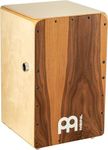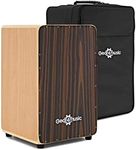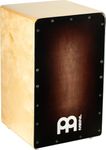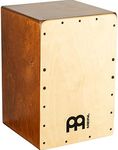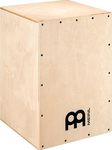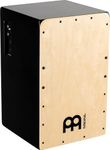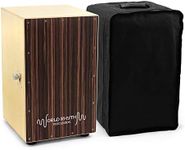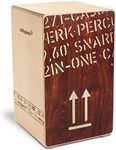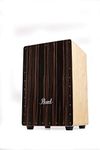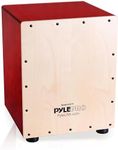Buying Guide for the Best Cajon Drum Box
Choosing the right cajon drum box can be a fun and rewarding experience. The cajon is a versatile percussion instrument that can be used in various musical genres, from flamenco to rock. When selecting a cajon, it's important to consider several key specifications to ensure you get the best fit for your playing style and needs. Here are the main factors to consider when picking a cajon drum box.MaterialThe material of the cajon affects its sound quality and durability. Common materials include plywood, hardwood, and composite materials. Plywood cajons are generally more affordable and produce a balanced sound, making them suitable for beginners. Hardwood cajons, such as those made from birch or mahogany, offer richer tones and greater durability, ideal for more experienced players. Composite materials can provide a good balance between cost and sound quality. Choose a material based on your budget and the sound you prefer.
SizeCajons come in various sizes, which can influence both the sound and comfort of playing. Standard-sized cajons are around 18 inches tall and provide a good balance of bass and snare sounds. Smaller cajons, often called travel or mini cajons, are more portable but may have a higher pitch and less bass. Larger cajons can produce deeper bass tones but may be less convenient to transport. Consider where and how you plan to use your cajon to determine the best size for you.
Snare SystemThe snare system in a cajon adds a crisp, snare drum-like sound to the instrument. There are different types of snare systems, including fixed snares, adjustable snares, and removable snares. Fixed snares are built into the cajon and provide a consistent sound, suitable for beginners. Adjustable snares allow you to customize the snare tension, offering more versatility for different playing styles. Removable snares give you the option to play with or without the snare sound. Choose a snare system based on your playing style and the level of control you want over your sound.
Tapa (Front Plate)The tapa, or front plate, is the striking surface of the cajon and plays a significant role in the instrument's sound. Tapa materials can vary, with common options including birch, beech, and other hardwoods. The thickness and material of the tapa affect the responsiveness and tone of the cajon. Thinner tapas are more sensitive and produce a brighter sound, while thicker tapas offer more durability and a deeper tone. Consider the type of music you play and your playing technique when choosing the tapa material.
Sound PortsSound ports are openings in the cajon that help project the sound. The size and placement of the sound ports can influence the volume and tone of the instrument. Larger sound ports generally produce louder and bassier sounds, while smaller ports offer a more focused and controlled tone. Some cajons have multiple sound ports to enhance the projection and tonal variety. Think about the settings in which you'll be playing, such as live performances or studio recordings, to determine the best sound port configuration for your needs.
